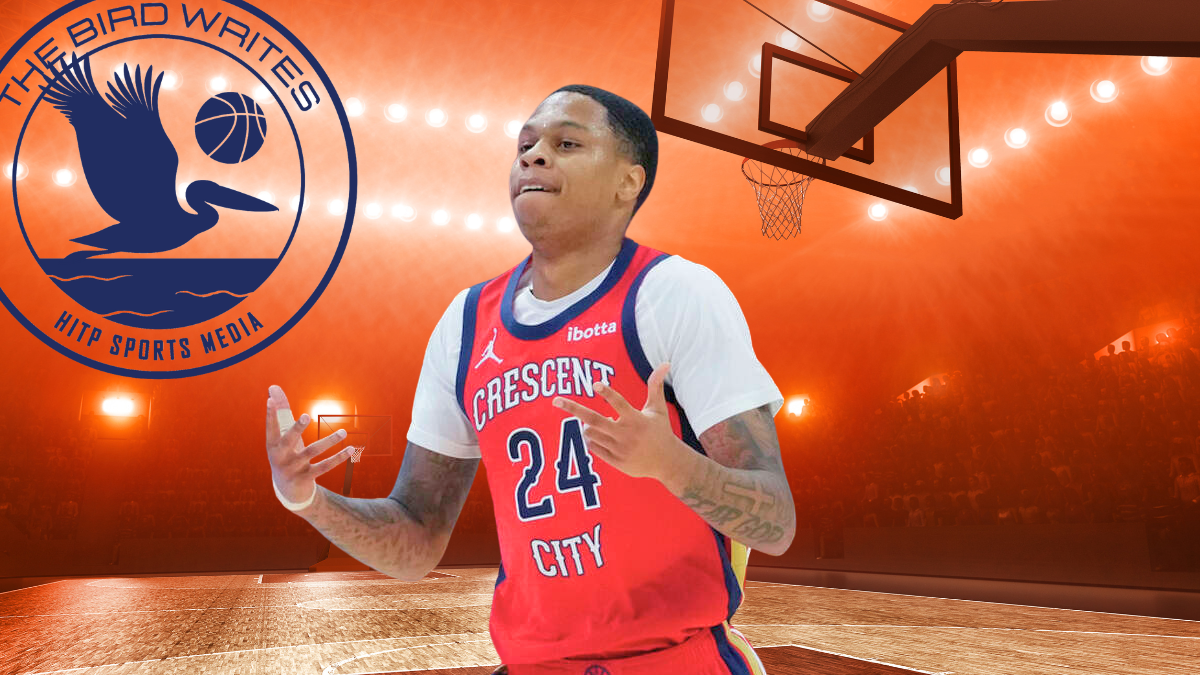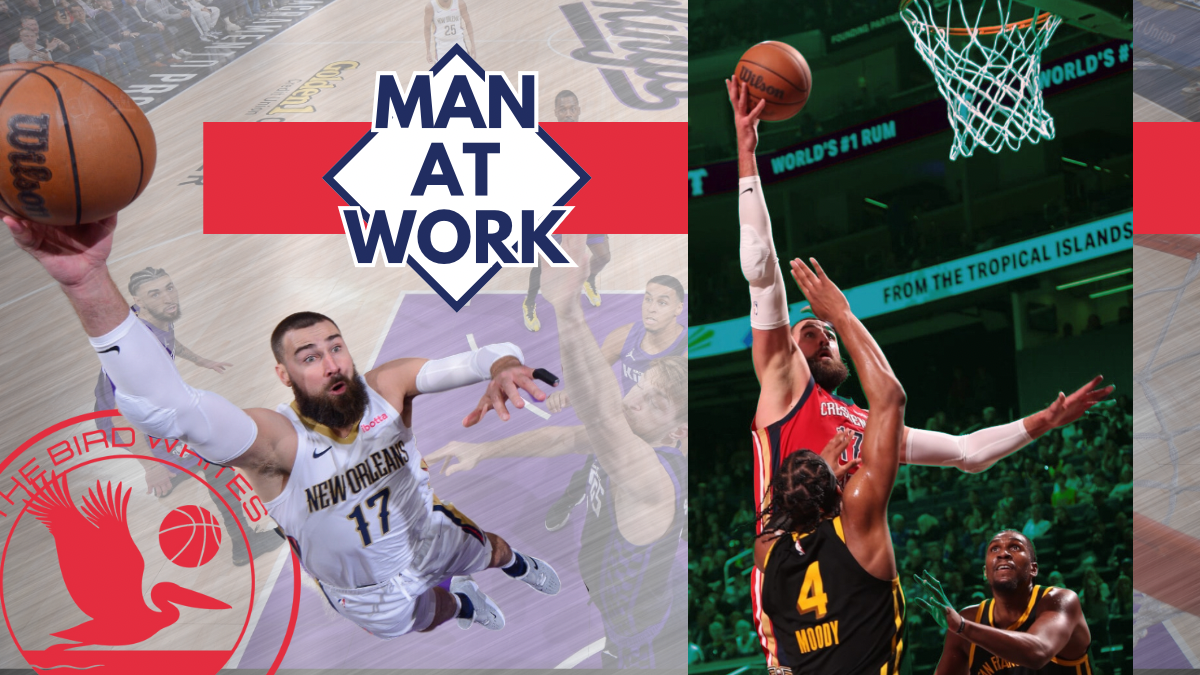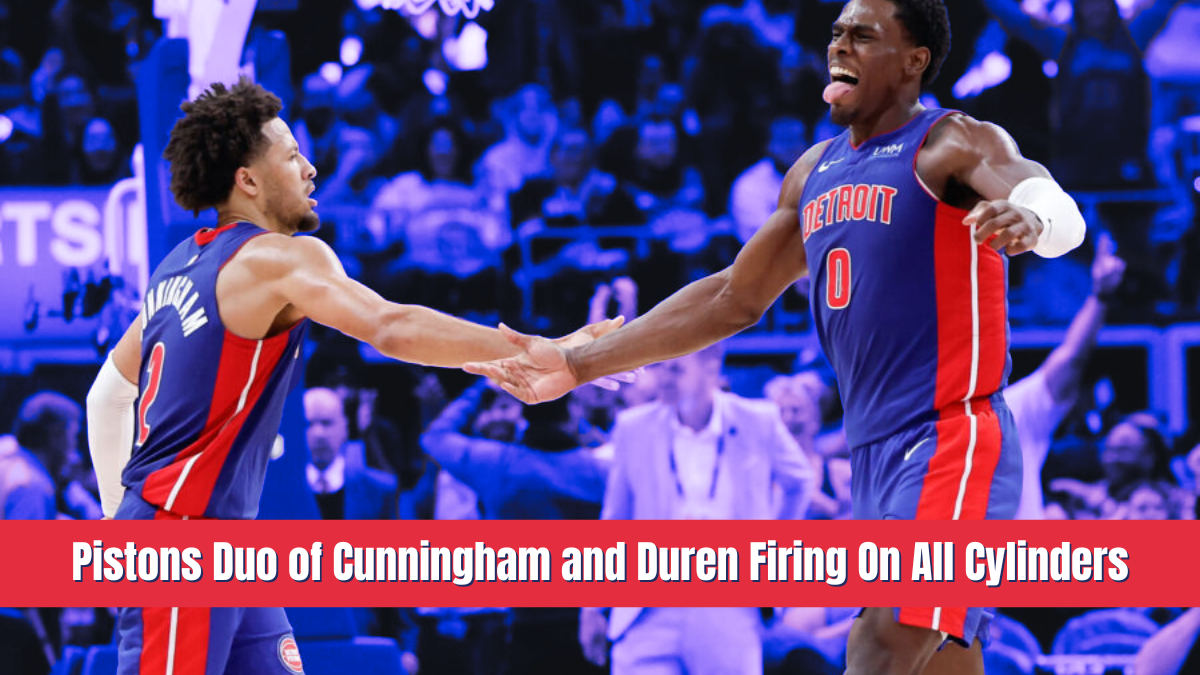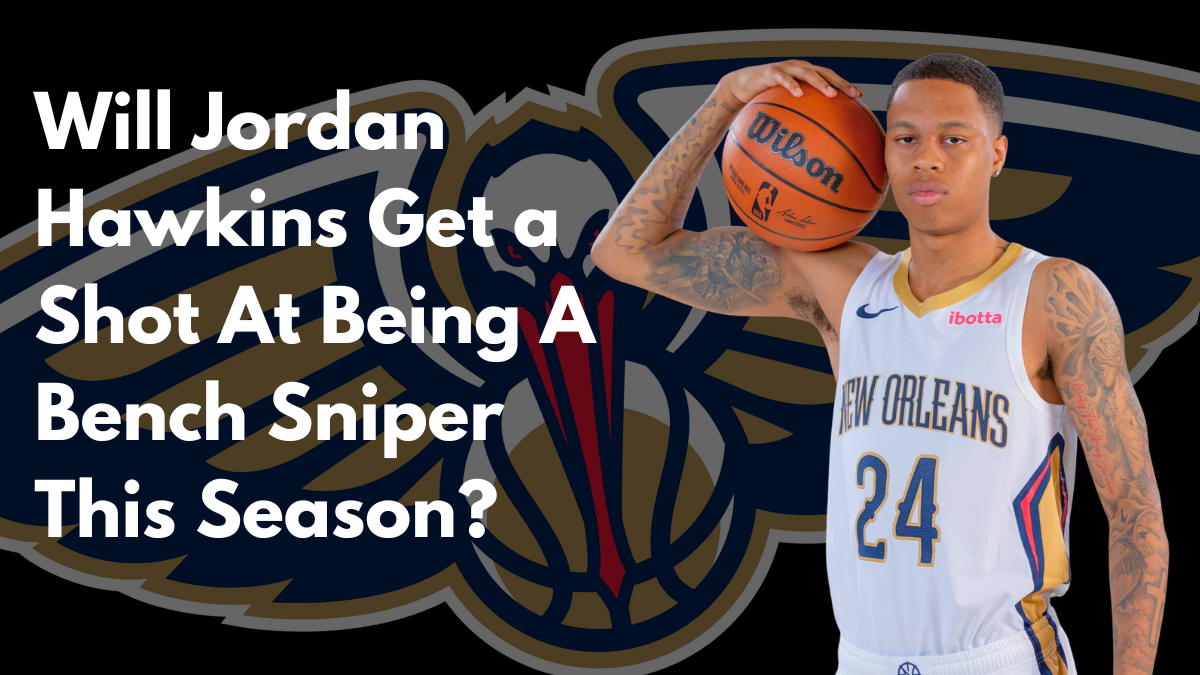Spending the 14th pick in a loaded 2023 draft on Jordan Hawkins emphasized the Pelicans’ desire to add shooting and spacing to their roster. The UConn two guard couldn’t find a consistent rotation spot but flashed impressive shotmaking and offensive shops in spurts. He slashed 7.8 points, 2.2 rebounds and 1.1 assists on 53.8% true shooting in his 17.3 minutes per game as a rookie. How can we project Hawkins going forward?
New Orleans drafted Hawkins for his shooting, which was his standout trait in year one. Hawkins shot 36.6% from deep on a huge 9.3 attempts per 75 possessions. He especially starred on catch-and-shoot attempts, placing in the 56th percentile last season at 37%.
Hawkins’ skill to sprint off of movement into jumpers is singular on the Pelicans’ roster, as he pressures defenses off the ball with his energy. He shot a blistering 45.9% from three on off-screen plays on 37 attempts, a number New Orleans should look to increase as Hawkins continues to earn more minutes.
While Hawkins struggled to score inside the arc, he flashed closeout attacking potential off of his shooting gravity. When defenders run Hawkins off the line, he can dribble into simple pull-ups and make plays off of the bounce. This will be Hawkins’ primary path to offensive value given his limitations as a creator. Improving as a scorer at the rim (54%, 10th percentile) will be paramount for his play-finishing upside.
As many rookies do, Hawkins struggled immensely on the defensive end. His problems guarding on and off of the ball likely led to his inconsistent play — Hawkins posted a bottom 10 defensive estimated plus-minus (-2.7) and the Pels’ defensive rating dropped by six points with him on the floor.
Hawkins’ lack of strength and problems handling physicality hurt him on and off the ball. Bigger handlers easily discarded Hawkins and he couldn’t imprint himself much as an off-ball defender, even when his positioning was sharp. At times, Hawkins showed commendable effort and energy on defense. He slides laterally to cut off defenders and will look to position himself in opponents’ ways. Adding muscle and size will allow Hawkins to feature more regularly in New Orleans’ rotation in the coming years.
The Pelicans’ inability to maintain offensive consistency often rolls back to guard play. Outside of CJ McCollum and Jose Alvarado, New Orleans needs more offensive juice in the backcourt. If he continues to grow physically and improve as a ball-handler, Hawkins’ three-point volume and secondary attacking will add critical spacing for Zion Williamson and the rest of the Pels.
Analysis by Ben Pfeifer
For more content, visit HITP Sports on YouTube or HITP Sports online.
READ MORE
- Has Jose Alvarado Peaked In Value, Or Can He Add More For The Pelicans’ Bench?
- After Career-Best Shooting Season, CJ McCollum’s Value To Pels Is Clear
- With Limited Options, Kel’el Ware Would Help Pelicans Protect The Rim
- 2 Years In, Dyson Daniels Is Defined By His Defense
- Zion’s Journey: Bittersweet Ending Can’t Diminish His Growth This Past Season
- Herb Jones is the Pelicans’ MVP: Most Versatile Player
- Is Letting Jonas Valanciunas Walk Best for Both JV and the Pelicans?
- 2023-24 Pelicans Season In Review Part III: A Critical Offseason Ahead
- 2023-24 Pelicans Season In Review Part II: What Went Wrong?
- 2023-24 Pelicans Season In Review Part I: Standout Performers
- Resilient Pelicans Face Biggest Bounce-Back Test of the Season In Game 2
- Will Pelicans Look Inside For Advantage Vs Thunder in Game 2?
- One More Time: Pelicans 6th Matchup With Kings Is For the Playoffs
- Previewing the Pelicans’ Possible Playoff Opponents: The Dallas Mavericks
- The Pelicans’ Top-Ranked Defense Has A Serious Weakness
- Brandon Ingram’s Development As A Passer Raises Pelicans’ Ceiling
- Herb Jones Isn’t Just An Option on Offense, He’s a Weapon
- Do the Pelicans Possess Enough Playmakers?




